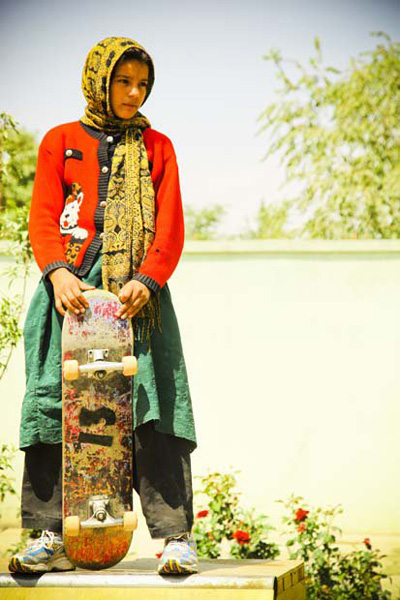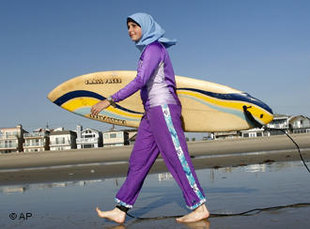Not Your (Stereo)Typical Muslima!
Friday before last we awoke to the news of the massacre in Aurora, Colorado. Even though my heart was breaking for the senseless murders, I like many of us who identify as Black, held my breath and hoped and prayed that the killer was not Black. That he or she did not look like me. Later I found out, after perusing quite a few blogs and Twitter feeds that many Muslims had the same anxious moment. Both Muslims and Black folk are so stereotyped and maligned in the media that it has almost become second nature for us to wish, most times even aloud, that we hope the perp is white or at the very least does not look like us. Because looking like us in this social mediated “post-racial” very racial age means looking like a thug (ie. Trayvon Martin) or looking like a terrorist (ie.Shaima Alawadi). And everyone knows thugs and terrorists are always guilty. The Hoodie to Hijab movement was born out of these two senseless murders and I thought the significance and symbolism couldn’t be stronger and more complicated and more misunderstood.
I have quite a few friends who are Muslim, but only one of my homegrrrls wears a hijab. Earlier the same week of the “Dark Knight” murders she had taken to Facebook to vent about a fellow Muslim, presumably a friend, not knowing she was also a Muslima. “How could this be,” she wondered. “I wear a hijab, I’ve prayed with this woman and we’ve fasted during Ramadan together!” You see my grrrl wears a hijab, recognizes Ramadan and is not shy at all about her faith, but she is also an avid biker, an up and coming major photographer, she talks about the power and passion of love on her Facebook page, she takes trips, many alone, and she has no problem giving her opinion. So as a slight to her, maybe unconventional, stance as a Muslima her “friend” played slick. She acted like she never knew they were of the same faith despite, or maybe inspite of, my homegrrrl’s hijab.
I started thinking about the hijab and how it informs and liberates, but how it can also constrain and malign. So many assumptions and expectations of what it means to be a hijabi are projected on young women, who for the most part CHOOSE to publicly acknowledge their faith through their dress. It just got me thinking about freedom in the face of stereotypes. How power is lodged in the seams of prejudice.
I recalled some pictures that comrade Yasiin Bey shared with me of two hijabis with boards—one a surfer the other a skateboarder. I loved these images so much that I asked to have copies. They were empowering to me and I’m not even Muslim. I understand, however, and full-heartedly believe in the power to revise notions of beauty, femininity, and Blackness. I saw that these sistren were revising notions of what it means to be hijabi. In the NY Times two weeks ago Ayesha Nusrat said as much in her piece, “The Freedom of the Hijab.”
“As an extension of my personality and identity, it instigates me to challenge the misconception that Muslim women lack the bravery, intellect and resilience to challenge authority and fight for their own rights. Every time I see my reflection in the mirror, I see a woman who has chosen to be a rights activist, who happens to be a Muslim and covers her hair incidentally.”
That same Friday of the massacre, incidentally marked the first full day of Ramadan. So in the spirit of Ramadan I write this and ask you: When you look in the mirror who do you see? What type of woman (or man) do you see in the reflection and does your reflection echo the freedom of your spirit to be who you want to be?
This post is dedicated to Laylah, Thembisa & Bashir.










Thanks Nic. Lovely piece. Also wanna shout out Af-Am hijabi Ibtihaj Muhammad from right here in NY who is a world-class fencer and was just named Ambassador for Women In Sports. These photos are awesome!
Excellent post. I think about the variables that makeup this aggressive response to identity theft. Considering our post-911 world I think a big part of these transformations and breaking stereotypes or becoming “normalized” has taken place within the immigrant Muslim community for different reasons than the black Muslim community. With the Blackamerican Muslim, the identity has been present. From the Nation, to Noble Drew Ali, to 5% etc. Muslim names were at once synonymous with black liberation.
A lot of immigrant Muslim women are 1st & 2nd generation Americans and they are trying to work those things out that their parents never really got. Within the Muslim community there has been a lot of racism projected towards both the Blackamerican Muslim & non-Muslim. When 911 took place it really shook the immigrant community’s world. Realities set in about how they were really thought about. This experience that was only an artificial ingredient taste of the black experience forced them to reassess their place. It was a humbling experience that has led the 1st & 2nd generation to snatch the mic from their parents who thought they were shot calling till the audience got rowdy.
Nice piece, thanks! Also interesting is that ironically muslim women in the west often do non-typical feminine things, like fencing:) for instance. they live outside of a western feminine norm already so are less constricted by it’s expectations. less caught up in what society thinks a female should be doing (like wearing bikinis) they are freed to explore alternatives. Freedom in face of stereotypes indeed.
I know we are only Twitter acquaintances but you wouldn’t know how amazingly timely this piece is. I am one week deep in my English teaching contract in Saudi Arabia. And navigating the Western Muslima/respectful criticism of just how amazing, strict, liberating and frustrating Islam exists here, is challenging. So challenging.
I loved this article. I am hoping I can show some of these images in class. I teach prep year for University, so my students are between 17-21 respectively. They are so sweet and know so much but how the world sees them, is covered. Yes, Saudi is extreme but also really charming and has incredibly beautiful moments but they are always fleeting. Anyway. I loved this piece. I am not sure I’d be allowed to share it but the photos, I will for sure.
Kisses